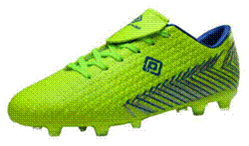- Home
- News & insights
- Insights
- In case you missed i…
- On this page
1 November 2023
In case you missed it - 2023! A round up of key brands developments this year
Part two
Here is part two of "In case you missed it", our round up of the key themes and cases from this year. Part one is here.
Unconventional marks: multimedia marks in the spotlight!
Last year, shape and pattern marks dominated the case law (article here); this year, it’s multimedia marks (mixed video and sound marks).
This is perhaps not surprising given that the scope to register these types of mark increased a few years ago when the requirement that a trade mark be capable of graphical representation was abolished. Now, a mark can be represented in, for example, MP3 or MP4 formats, rather than graphically.
Perhaps the most significant ruling this year has been that of the EUIPO Board of Appeal in the Super Simon case. Overturning the decision of the Examination Division, the Board held that a 22-second animated video was sufficiently distinctive for registration as an EUTM. Prior to this mark's filing, most multimedia marks applied for had consisted of relatively short (less than 5-second) videos usually featuring an animated company logo. Conversely, the Super Simon mark is more akin to a "story".
The Super Simon application was filed as a "test case" to help scope out the law in this area, particularly around more complex and longer multimedia marks. Importantly, the Board held that it is not necessary for consumers to remember all details of a multimedia mark for it to be registrable; it is sufficient that they remember the main distinctive element (article here).
This potentially means that longer multimedia marks will be accepted for registration, at least as EUTMs. We expect to see an uptake in multimedia applications following this decision and as the metaverse and other virtual environments develop. Meanwhile, we await a suitable trade mark application to clarify the approach in the UK.

A snapshot from the Super Simon trade mark application
Reduced scope for abuse of process claims?
In 2020, the EUIPO Grand Board of Appeal held that the filing by Michael Gleissner of revocation actions against more than 30 EUTM registrations owned by a member of the Peek & Cloppenburg group amounted to an abuse of process and rights.
The Grand Board based its decision on the fact that the actions filed by Gleissner were numerous, retaliatory and did not seem to have a commercial rationale. It meant that the revocation actions were dismissed and Peek & Cloppenburg did not have to spend the considerable time and money proving use of its marks.
That decision has now arguably been cut back following a ruling of the EU Cancellation Division that the filing of revocation actions by an individual, Dieter Hang, against 69 registrations owned by Formula One did not amount to an abuse of process or rights (article here).
The decision – which has been appealed - appears to narrow the applicability of the Gleissner decision to scenarios where the cancellation applicant has filed indiscriminate revocation actions against registrations owned by one particular entity, with the aim of achieving undue financial benefit. If upheld, it will be an unfortunate narrowing of abuse of process claims for brand owners.
The cases illustrate the importance of formal watching for trade mark and domain name squatting and of keeping evidence of use (sufficient to combat a – or potentially multiple - revocation action(s)) even for well-known marks that have been widely used.
Consider context in infringement claims
Two UK cases this year have emphasised the importance of context for trade mark infringement: Iconix v Dream Pairs (article here) and Prysmian Cables v M/S Apple. In infringement, the local context of use is taken into account in deciding whether there is a likelihood of confusion, whereas in oppositions/invalidity actions it is not.
The Iconix case relates to an offer for sale on Amazon by Dream Pairs of football boots and trainers containing a logo allegedly similar to the well-known Umbro logo registration of Iconix (both depicted below). The High Court found no likelihood of confusion - the marks had only a low level of similarity and the context (use of the seller's name and the lack of reference to Umbro on the Amazon listing page) mitigated against a likelihood of confusion. The Prysmian Cables case also touches on this issue and contains a useful summary of the law in this area.
The cases illustrate that, while context of use won't always be sufficient to avoid a finding of infringement, it can sometimes tip the balance in that direction. A defendant facing an infringement action based on likelihood of confusion can potentially avoid liability if the way it uses its mark – including for example in combination with its house mark or in the clear overall context of that house mark - is sufficient to mean that consumers are in reality unlikely to be confused.
Bear in mind, however, that when dealing with an infringement claim based on a mark with a reputation, the context of use might not be sufficient to avoid the necessary "link" being made by consumers and therefore infringement being found.
 |
 |
|---|---|
| The allegedly infringing product | The registrations alleged to be infringed |
Don’t delay in taking action against conflicting marks
Two lines of cases this year have emphasised the importance of not delaying in taking action against conflicting marks, particularly where those marks are registered. The first line of cases relates to acquiescence; the second to honest concurrent use.
UK and EU trade mark law provide that a trade mark owner can – in certain circumstances – lose the right to invalidate or object to the use of a later registered trade mark. This occurs if the owner of the earlier mark has knowingly acquiesced to the use of the later registered mark for five continuous years (see our guide here).
In Coombe v Wolff, the High Court confirmed that earlier rights holders must bring an administrative or court action for infringement to stop the five-year period from running (article here). Further details about what is required were fleshed out by the High Court (IPEC) in Industrial Cleaning v Intelligent Cleaning (article here). This follows a similar ruling by the ECJ (article here).
It is now quite common for acquiescence to be raised by defendants to invalidity and infringement actions (if their mark is registered). To avoid such claims, brand owners must not allow claims against the owners of later registered marks to drag on (which can sometimes happen if there are lengthy settlement/co-existence negotiations) and must bring an action for infringement before the end of the requisite five-year period.
The same is also true more generally given the scope for defendants in infringement actions to argue honest concurrent use. In Match Group v Muzmatch, the Court of Appeal confirmed that honest concurrent use is not a stand-alone defence to infringement but a factor to be taken into account in determining whether use of the defendant's mark has adversely affected any of the functions of the claimant's mark (article here).
Once the claimant has established a prima facie case of infringement, the burden shifts to the defendant to establish that, by virtue of its honest concurrent use, there is nevertheless no adverse effect on any of the functions of the trade mark. Honest concurrent use can even be raised if the defendant started to use its mark after the trade mark alleged to have been infringed was registered (ie use that is initially infringing can become non-infringing due to honest concurrent use, albeit rarely).
While honest concurrent use is quite difficult to show, this case also emphasises the importance of brand owners taking swift action against the use of allegedly conflicting marks (before any concurrent use is established).
Similarity of marks – we're confused!
Trade mark practitioners could be forgiven for thinking that the criteria for judging something as important as similarity of marks would be well worked out by now. It seems not!
There appear to be differences of approach at both the EUIPO and CJEU on a range of issues, including:
- Whether marks are visually and conceptually similar – and the level of abstraction at which that is judged (particularly for figurative marks).
- Whether figurative marks have a meaning such that a conceptual comparison is possible.
- The outcome if one mark has a conceptual meaning and the other does not (ie whether the marks are conceptually dissimilar or neutral in that scenario).
-
The different weight to be given to visual, aural and conceptual similarities and dissimilarities (and particularly whether there is similarity/a likelihood of confusion where marks are visually and/or aurally similar but conceptually dissimilar and vice versa).
This is important because, if marks are deemed not similar, then the case automatically fails - there can be no likelihood of confusion or unfair advantage/detriment.
The above is best exemplified by the three recent cases involving figurative marks (discussed below), but the issues potentially extend to all types of mark.
In Zitro v EUIPO, the General Court dismissed an appeal against a decision that two figurative marks (depicted below) representing fantasy figures were not similar (article here). The marks were deemed dissimilar visually and neutral/dissimilar aurally. A conceptual comparison was not possible since the marks did not apparently convey any meaning.
Some commentators might argue that the visual comparison between the two marks was too granular and failed to consider the overall similarities between the marks and the imperfect recollection of consumers. Some might also argue that the marks convey a similar concept, at least at a general level. Nonetheless, they were deemed dissimilar.
 |
 |
|---|---|
| The mark applied for | The earlier registration |
The second case is the EUIPO Opposition Division's decision in the Asics swirl dispute, where the marks (depicted below) were held not similar overall. This decision can be contrasted with the finding of similarity - and indirect confusion – in the same case at the UKIPO (article here).
 |
 |
|---|---|
| The mark applied for | The earlier registration |
Lastly, in the General Court's decision in Société Elmar Wolf v EUIPO, the marks (depicted below) were – again – deemed not similar overall.

|
 |
|---|---|
| The mark applied for | The earlier registration |
These sorts of decisions have led some commentators to ponder whether the scope of protection afforded to figurative marks is being narrowed. This is particularly so as there have also been findings of no likelihood of confusion between various figurative marks that have surprised practitioners (see eg the Jaguar and Abercrombie & Fitch cases).
While a narrowing of protection is certainly arguable, there are not enough decisions yet to know whether these are anomalies or represent a real change of approach. Given that some of the issues highlighted above go beyond purely figurative marks, clarification is welcome! Meanwhile, brand owners will need to be careful to submit focused arguments on similarity of marks.
Proving a "link" for a reputation-based claim can be tricky
It has always been onerous for the owners of marks with a reputation (fame) to prove all of the elements of an unfair advantage/detriment claim. That may have just got more difficult at EU level following two recent rulings of the General Court.
In Puma v EUIPO and Bimbo v EUIPO, the Court held that the average consumer would not make the necessary "link" between the earlier marks with a reputation and the later marks because they targeted distinct and different markets.
In the Bimbo case, an EUTM application for BIMBO BIKE and logo (depicted below) for bikes, scooters, toys, bike parts/accessories, bike cleaning products, bike tools and the retail of bikes was opposed based on an earlier Spanish word mark BIMBO, registered for various grocery products such as chocolate, bread, cakes, pastry and confectionery. It has a strong reputation in Spain for bread.

The Court held that the public would not make a "link" since "…the goods and services covered by the application for registration were too far removed from the goods in respect of which the earlier mark had a reputation." The ruling in Puma was similar.
Some commentators have found this surprising given the fame of the Puma and Bimbo marks and the fact that they have a reputation for products targeted at the general public. This is particularly so in the Bimbo case since grocery products and scooters/bikes/accessories are often both sold in large supermarkets.
Whether this represents a trend at the ECJ remains to be seen. There are still plenty of successful reputation-based claims (see eg GOOGLE CAR). Nonetheless, brand owners relying on reputation-based claims will need to submit clear evidence and arguments on why the public will make a "link" between the marks, particularly where the goods/services in question are far apart.
More lies ahead
Here are just a few of the things that lie ahead as we move into 2024.
In the UK, we await the Supreme Court decisions in Sky v SkyKick (bad faith), Lifestyle Equities v Ahmed (liability of directors for trade mark infringement) and Lifestyle Equities v Amazon (liability of intermediaries for trade mark infringement). Appeals to the Court of Appeal in the Lidl v Tesco and the Samsung watch faces app cases (articles here and here) are also pending.
At ECJ level, we await decisions on whether the prior right has to be in existence when the decision is taken, as discussed in Part one of this article. With the ECJ now taking on more appeals from the General Court, we can expect further important decisions.
We can also expect to see rulings on the intersection between IP/brands and technology including AI, NFTs and the metaverse (see our dedicated metaverse page, as well our article on the Metaburkin NFT case and articles on the EUIPO's and UKIPO's approach to the classification of virtual goods/services – articles here and here).
On the legislative side, a new design Regulation and Directive are in progress at EU level which will see the definition of a "design" and "product" expanded to include digital designs and virtual products (article here). If passed, this will see UK and EU design legislation diverging (although the UK has previously indicated a possibility of updating its designs legislation).
In further changes to EU legislation, the new regulation establishing geographical indication protection for craft and industrial products has been signed and should come into force towards the end of November 2023. The new legislation will protect locally renowned products such as glass, lace and natural stones, safeguarding know-how and heritage.
Now that the Digital Services Act has come into force in the EU, we might also see increased scope for action to be taken by brand owners and others against counterfeit goods.
Closer to home, the Retained EU Law (Revocation and Reform) Act 2023 will increase the scope for the UK courts to depart from retained EU case law in appropriate cases. There have also been recent consultations on digital transformation at the UKIPO, which is likely to see changes to various processes and the possible abolition of series marks. If that's not enough, there is also talk of a possible further consultation on the UK's post-Brexit exhaustion of rights system.
Related Insights

EU General Court in TESTAROSSA: genuine use threshold lowered for second-hand sales
by Adeolu Faniran and Louise Popple

Mercedes radiator grille found to be distinctive
by Louise Popple and Ellie Harrison

easyGroup v Premier Inn: Court rejects family of marks monopoly and clarifies section 10(3) protection
by Louise Popple and Moira Sy

